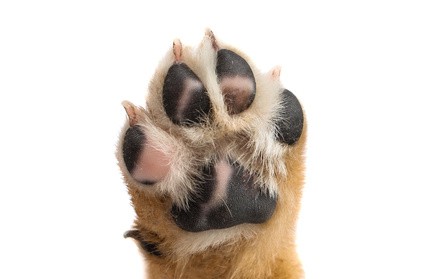Dog foot problems can become a real pain in the foot for your dog. And, it can become a real pain for you, his caretaker, both to figure out the exact nature of his paw problems as well as the dog paw treatment to help the situation.
You may suddenly notice that your dog is limping or biting at his foot. Let’s break down the most common dog foot problems and the solutions to them.
*This post may contain affiliate links which means if you make a purchase from a link on this site, I will earn a small commission. This helps to support the site and keep it going but you will not pay a penny extra.
Common Dog Foot Problems:
-
- Spread his toes slightly apart, inspecting the nails to assure none are broken or bleeding. Dogs will often catch their nails in carpets, deck boards, etc., causing them to rip. If this happens, you will need to stop the bleeding with a styptic powder, clean and apply antiseptic ointment. Then, a Veterinarian appointment is in order to assure nail does not become infected. Also, if the nail is still attached, it may need to either be bandaged or removed.
- Check between the paw pads for any objects that may be lodged there, such as: sand spurs, thistles, stones, grass. If you discover something there and there are no open wounds or abrasions around the area, you can simply remove it with a long tweezers and your dog will likely run off happily on his way. If the object has caused an irritation, clean it with cool water and apply an antibiotic ointment.
- Examine the bottoms of your dog’s sore paw pads. Is the surface rough and dry, cracked or bleeding? Weather is often the culprit. Hot, rough pavement in summer can burn and irritate the dog’s paws, causing dog paw problems. Unless there is a burn, which will need an immediate Vet’s attention, wet a washcloth with cool water and place on the pad several times. The dry, cracked paw pad can then be soothed with a cream to soften the skin. Winter can be equally bad for your dog and cause issues for your dog’s paw pads. Very cold weather can cause frostbite and salt used to de-ice your walk is very irritating to the dog’s pads.
/>
&
These are the most common dog foot problems. Others, such as fungal and bacteria infections will require a definite trip to your veterinarian. Then, there is the problem of allergies which plague many dogs and often goes overlooked. Chewing of the foot is a common sign of allergies in a dog. For the scoop on signs your dog has allergies, check out this page. Or to learn how to protect dog paws, head on over to this page.
